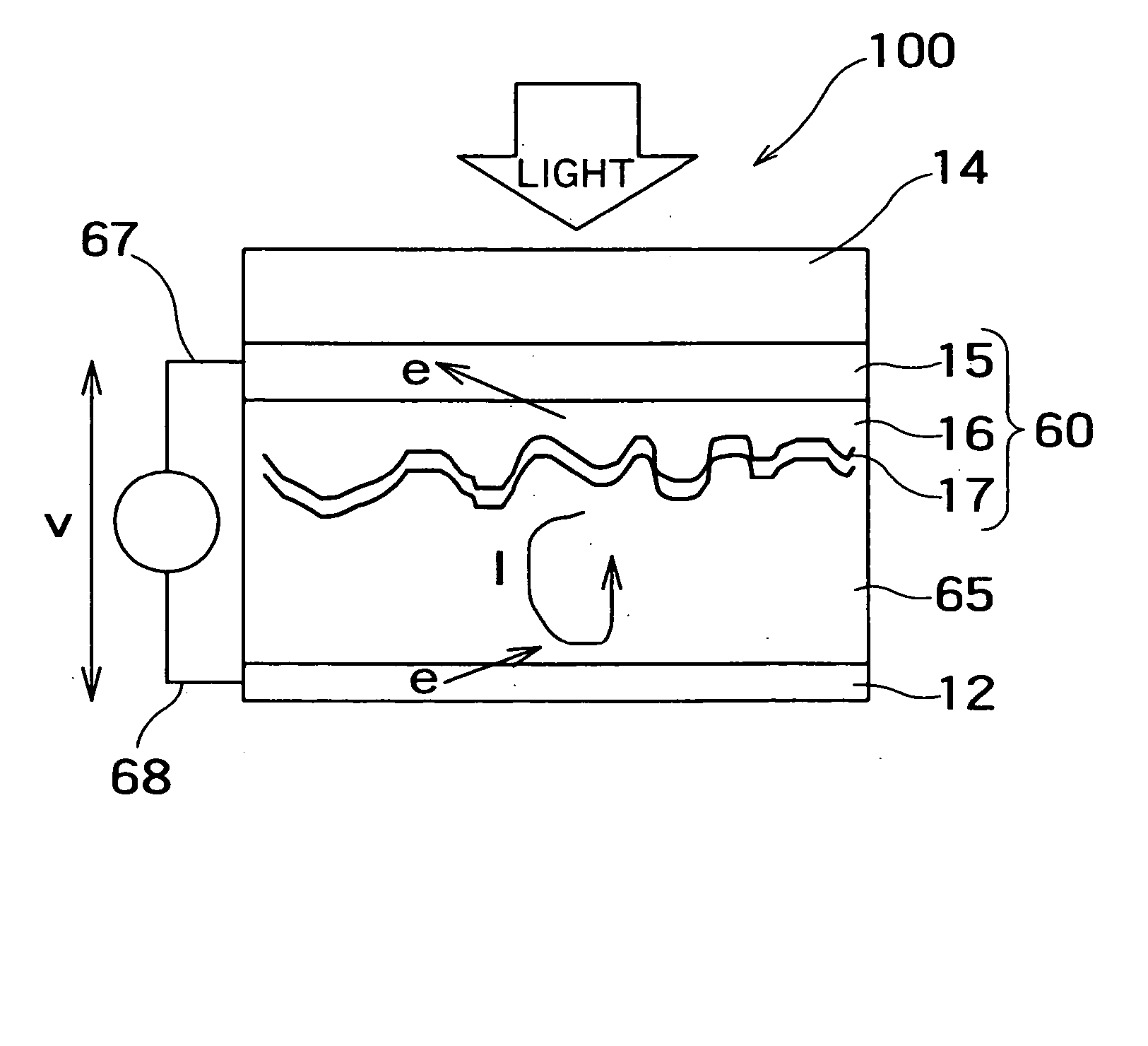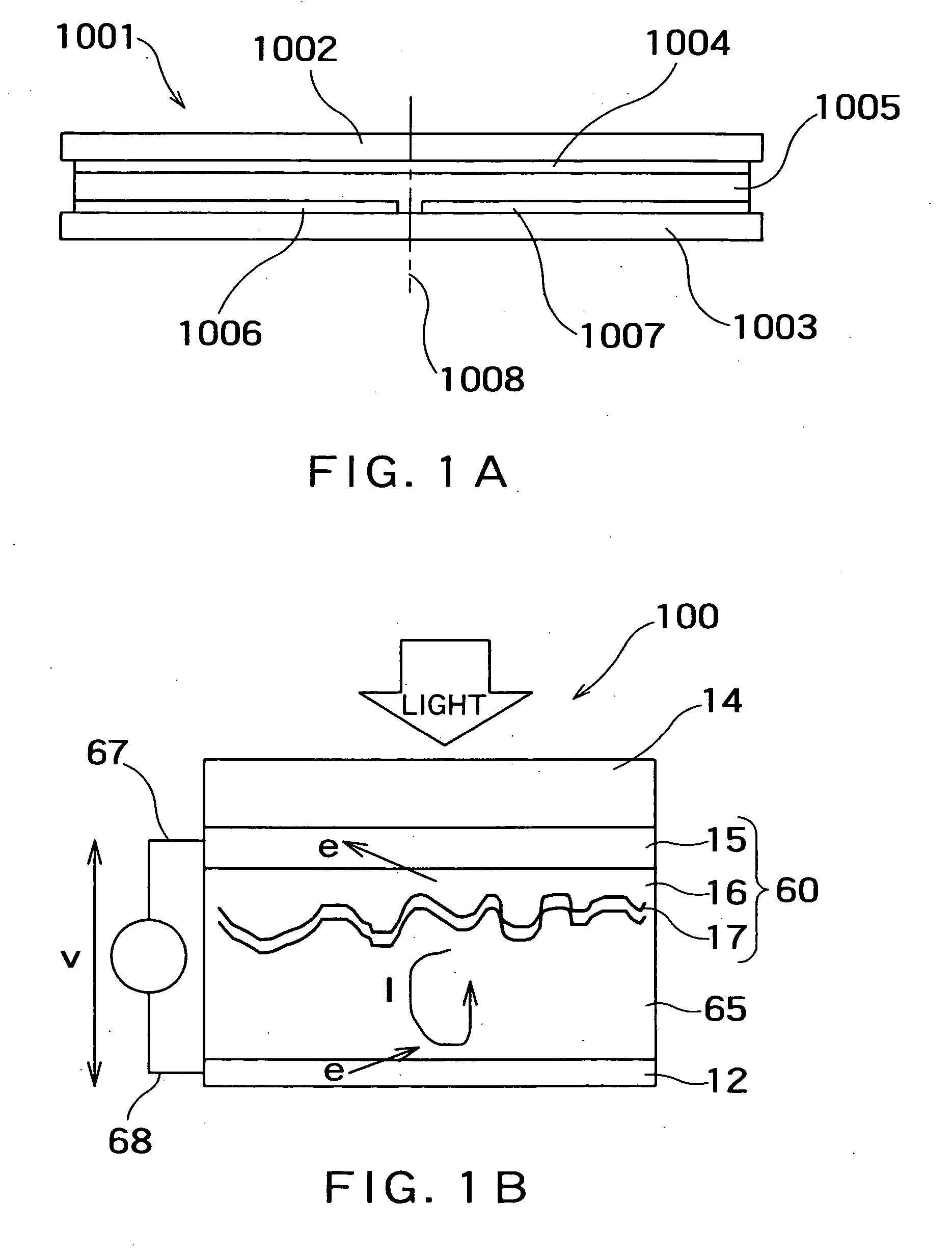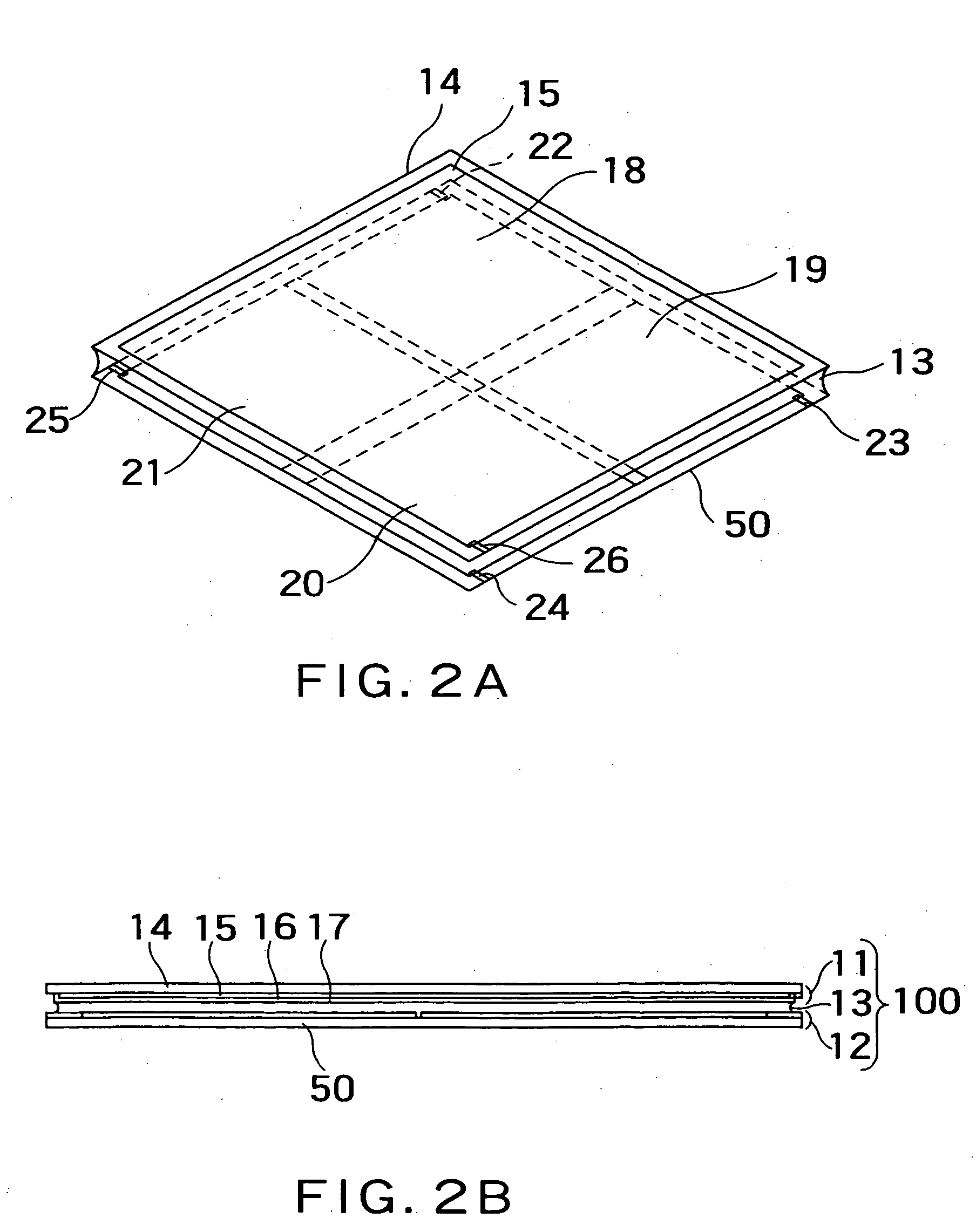Photodetector and photo detecting system
- Summary
- Abstract
- Description
- Claims
- Application Information
AI Technical Summary
Benefits of technology
Problems solved by technology
Method used
Image
Examples
Embodiment Construction
[0084] Referring now to the accompanying drawings, the preferred embodiments of the present invention will be described below in detail.
First Preferred Embodiment: Transmission Photodetector with Electrode Divided into Four Parts
[0085]FIG. 1A is a schematic sectional view showing an example of a basic construction of a preferred embodiment of a photodetector according to the present invention. That is, a photodetector 1001 comprises a first electrode part 1004 formed on a transparent substrate 1002, a second electrode part which is formed on a transparent substrate 1003 and which comprises two divided first and second electrode cells 1006 and 1007, and a photoelectric transfer part 1005 sandwiched between both electrode parts.
[0086] Light beams entering the transparent substrate 1002 pass through the transparent substrate 1002 and the first electrode part 1004 to cause the movement of electrons and positive holes in the photoelectric transfer part 1005. As a result, the electromo...
PUM
 Login to View More
Login to View More Abstract
Description
Claims
Application Information
 Login to View More
Login to View More - R&D
- Intellectual Property
- Life Sciences
- Materials
- Tech Scout
- Unparalleled Data Quality
- Higher Quality Content
- 60% Fewer Hallucinations
Browse by: Latest US Patents, China's latest patents, Technical Efficacy Thesaurus, Application Domain, Technology Topic, Popular Technical Reports.
© 2025 PatSnap. All rights reserved.Legal|Privacy policy|Modern Slavery Act Transparency Statement|Sitemap|About US| Contact US: help@patsnap.com



